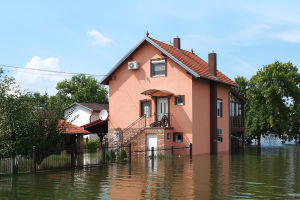Lykkers, in uncertain times, many are drawn to survival stories and strategies. But separating fact from fiction is vital. Some widely accepted "tips" can actually be harmful, even deadly.
Let’s break down four of the most misleading survival myths that still circulate among survivalists and outdoor enthusiasts.
Myth #1: Always Bug Out When Crisis Hits
The Misconception: Many believe that grabbing a backpack and heading into the wilderness is always the safest move during a crisis.
The Truth: While evacuation is sometimes necessary—such as in the case of fires or structural danger—it shouldn't be the first instinct in every situation. Staying at home, if conditions allow, is often safer. It offers shelter, more food and water, and a more secure base.
What to Do Instead: Keep a bug-out plan ready, but don’t abandon your home unless it’s truly unsafe. Evaluate each situation carefully. Your home might offer more protection than the open wild.
Myth #2: You Can Live Off the Land
The Misconception: It's often assumed that nature can provide everything needed for long-term survival: wild berries, mushrooms, fishing, hunting.
The Truth: This may sound romantic, but it’s not practical for most. Seasonal changes affect food availability. In winter, edible plants are rare, and animals are harder to find or undernourished themselves. Even skilled foragers and hunters can struggle.
What to Do Instead: Prepare and store food in advance, especially if planning to stay in one location. Gardening and preservation techniques offer more reliable sustenance than relying entirely on nature’s limited resources.
Myth #3: MREs and Emergency Rations Are Enough
The Misconception: Meals Ready to Eat (MREs) and emergency food snacks are seen as long-term solutions.
The Truth: These items are formulated for short-term use—typically a few weeks at most. Overreliance leads to digestive discomfort and nutritional deficiencies. Emergency rations lack essential nutrients for sustainable health.
What to Do Instead: Use these as temporary backups. A better plan includes canned goods, dried legumes, whole grains, and preserved fruits and vegetables. Balance is key for energy, immunity, and mental wellbeing.
Myth #4: Going Solo Is the Smartest Move
The Misconception: Managing alone means fewer responsibilities and more control.
The Truth: Isolation increases vulnerability. Time becomes scarce when all duties fall on one person. Security, rest, and task-sharing are harder to manage. Fatigue and lack of protection can lead to serious risks.
What to Do Instead: Consider a trusted group. Cooperation leads to better resource management, enhanced safety, and emotional resilience. Humans thrive in communities, especially in times of stress.
Conclusion: Think Beyond the Clichés
Survival isn't about dramatic escapes or lone-wolf bravado—it’s about preparation, flexibility, and clear-headed decision-making. Lykkers, staying safe means challenging the myths, trusting only what’s tested, and staying grounded in reality. The right knowledge can turn a crisis into a manageable challenge. Share these truths, and let's make smart choices together.


